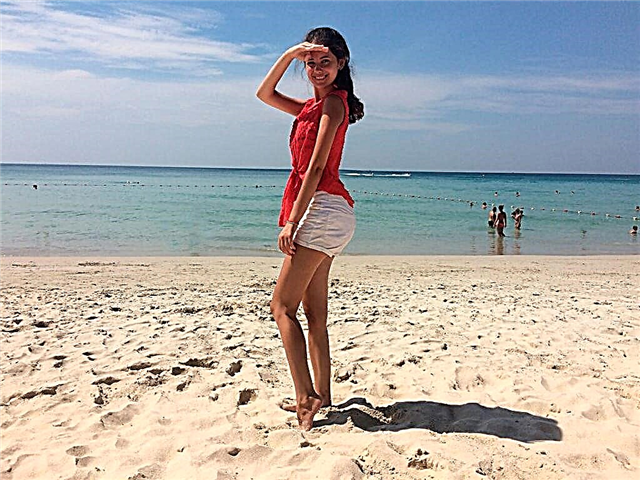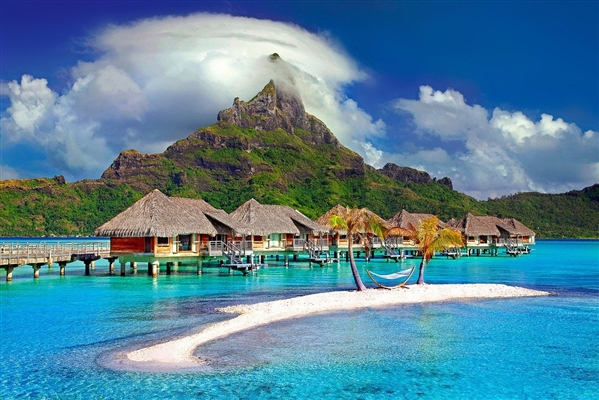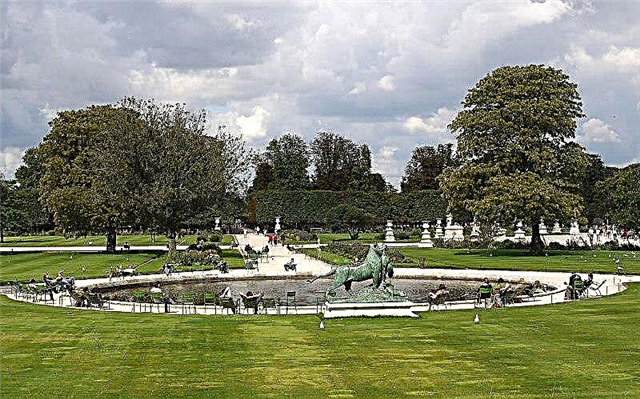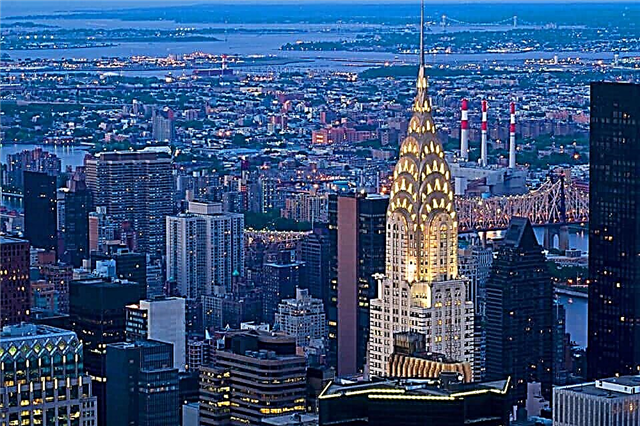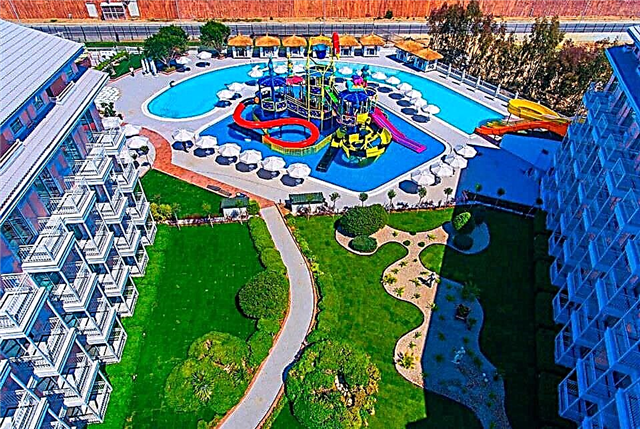Ho Chi Minh City or Saigon, as it is also called from old memory, is an incredibly crowded and noisy city with completely chaotic traffic, but at the same time with a unique Asian flavor. Every morning millions of small mopeds leave the roads of the metropolis and thousands of residents rush to parks for morning exercises.
In the center of Ho Chi Minh City, the legacy of the French colonialists mingles with the modern reality of glass skyscrapers, while traditional pho soup eateries sit alongside trendy restaurants. Everything around is honking and honking, gradually merging into an incessant cacophony. But what is surprising is that after a while you begin to get used to this chaos and even get pleasure from it.

The best hotels and hotels at affordable prices.
from 500 rubles / day
What to see and where to go in Ho Chi Minh City?
The most interesting and beautiful places for walking. Photos and a short description.
Kuti Tunnels
A network of underground tunnels in the suburbs of Ho Chi Minh City, which appeared during the Vietnam War. The Viet Cong National Liberation Front guerrillas hid in the tunnels and attacked the American army from there. The total length of the labyrinths is over 150 km. They contain several levels where living quarters, ammunition depots, hospitals were located. Nowadays, excursions for tourists are held in some of the tunnels.

Cathedral of Our Lady of Saigon
Catholic temple in the heart of the city, built by the French in 1880. Its uniqueness lies in the fact that all materials for the work were imported from France. At the same time, the chief architect personally controlled their quality. The cathedral is the largest and most majestic temple in Southeast Asia, it was built in accordance with the canons of the European style.

Bitexco Tower Observation Deck
Bitexco is a modern skyscraper in the central part of Ho Chi Minh City, owned by a financial corporation. It was erected in 2010 by a French architectural bureau. The building is 262 meters high, making it the second largest building in the city. In 2011, a revolving observation deck was opened on the 49th floor, with a panoramic view. There is a restaurant on the 50th floor.

People's Committee building
The building was erected in the elegant style of French colonial architecture (the building of the Paris City Hall was taken as a model). After the occupation administration left Saigon in the middle of the 20th century, the building housed the office of the mayor of the city. After the unification of Vietnam, government offices moved here. There is a small green park in the square in front of the building.

Central post office
The post office building is one of the oldest in the city, it was erected in 1886-91, guided by the drawings of G. Eiffel - the author of the famous tower in Paris. The building was built in a mixed Gothic, Renaissance and Colonial style. From the inside and outside, it resembles a European train station of the early 20th century. Vietnamese leader Ho Chi Minh worked here when he was 17 years old.

Reunification Palace
The modern building was erected after the end of the Vietnam War in the 1970s. Previously, there was a 19th century building on this site, which served as the residence of the Governor-General of Indochina. The Reunification Palace has five floors and 100 rooms. The interior is luxurious and pompous. The corridors still have carpets, and the offices have massive wooden furniture.

War Victims Museum
The collection is dedicated to the Vietnam War, or rather to the period when the United States took an active part in the hostilities. The exhibition is housed in several buildings and is divided into eight thematic sections. Here you can see weapons and equipment, as well as numerous photographs of bombings, bullying by American soldiers against the population and the results of the use of chemical weapons.

Museum of Fine Arts
The exposition is located in a colonial-era mansion. In terms of its value, it is second only to a similar exhibition in the capital of the country - Hanoi. The museum exhibits works of Vietnamese art - paintings, silk panels, sculpture, national ceramics, woodcut. There are also works by foreign masters and exhibits related to contemporary art.

Vietnam History Museum
The museum was founded in 1929. For a long time of its existence, he managed to win the fame of one of the most authoritative in the whole country. The exposition covers a wide historical period from tribal relations, the struggle for independence and ancient kingdoms to the end of the reign of the Nguyen dynasty in the 20th century. The museum will be interesting for both ordinary tourists and specialists - professional historians.

Museum of Traditional Vietnamese Medicine
The region of Southeast Asia, along with China, has long been famous for its non-standard medicine. Vietnam has been particularly successful in this matter - it is not for nothing that "people's pharmacies" with all sorts of drugs are so popular with foreign tourists. The Museum dedicated to traditional healing is somewhat outside the main attractions. It is better to visit this place with a guide who will understand the exhibits.

Opera theatre
The Ho Chi Minh City Opera Stage is located in a picturesque building in the central part of the city. Like many buildings in the southern capital, it was built in the French colonial style. The interior design is also done by French craftsmen. The building is a copy of the Hanoi Opera House. It can host not only musical performances, but also events of a different format.

Puppet theater on the water
The traditions of the Vietnamese puppet theater go back more than one century. For a long time, it has practically not undergone changes, and today viewers can watch the same performances as several centuries ago. The performance takes place on the water surface. Wooden figures move smoothly on the surface and play out plots unknown to a foreigner. Even without understanding a word during the performance, you can deeply immerse yourself in Vietnamese culture.

Tien Hau Temple
In Tien Hau, the patron goddess of sailors and fishermen is worshiped. She is especially venerated in the southern provinces of the country. That is why Ho Chi Minh City could not do without such a place. The temple was built in the 18th century, it is located on the territory of Cholon Chinatown. It is logical that the building was built in the Chinese style from materials brought from the Middle Kingdom.

Jade Emperor Pagoda
The temple is dedicated to the deity Ngoc Hoang - the ruler of heaven in Taoism. According to beliefs, the Jade Emperor stands guard over Heaven and determines who is worthy to climb there and who is not. The pagoda was built with funds from the Chinese community at the beginning of the 20th century. Inside, in the very center, there is a gilded sculpture of the god, guarded by figures of guards. The temple is surrounded by a picturesque park.

Tang Dinh Church
Incredibly beautiful Catholic church in bright pink color with white openwork trim. Thanks to such colors and decor, the building looks like a fabulous "gingerbread" house. It was erected in 1880 by French craftsmen in the "flying gothic" style. The church immediately attracts attention with its rather unusual appearance, because even in Europe it is rarely possible to find a religious building of such an unusual color.

Ben Thanh Market
Officially, the market has been operating since the 19th century. Today it is one of the most popular tourist destinations in Ho Chi Minh City.Here you can buy inexpensive souvenirs, excellent quality Vietnamese goods, designer items, local aromatic coffee and tea. The market also prepares dishes of national cuisine and offers fresh juices from exotic fruits.

Tao Dan Park
The park is located almost in the center of Ho Chi Minh City. This green oasis in the middle of a bustling metropolis is perfect for morning exercise (the Vietnamese love to do it in droves) and relaxing walks. Meetings of pensioners are often held here, who, as a rule, are passionate about some hobby: bird watching or Chinese exercises - it does not matter, because people first of all come here for communication.

Suoi Tien Amusement Park
Suoi Tien is a combined park, where, in addition to attractions, a zoo, a 4D cinema, a water park and other facilities, there are also active temples and religious sculptures. It opened in 1995. At the moment, the territory of the park is more than 50 hectares and it continues to expand. At the entrance, guests are greeted by a huge statue of a dragon, a fairy-tale creature highly revered in Asian culture.

Zoo and Botanical Garden
The botanical garden was created by the French scientist L. Pierre at his own expense. Hundreds of plant species from Cambodia, Laos, Taiwan, as well as from the countries of the American and African continents grow here. There is a zoo on the territory of the garden, which very harmoniously fits into the landscape. The menagerie is home to about 500 animals and more than 100 birds. Pink flamingos and black Asian bears are especially beautiful.

Saigon river
An important waterway in the southern part of Vietnam, providing uninterrupted transportation of goods. It runs through the center of Ho Chi Minh City. Pleasure boats run within the city. The water in Saigon is not very clean, sometimes you can smell an unpleasant smell from it. Nice views open from the banks of the river and from numerous bridges. In some places for walking there is an embankment.


